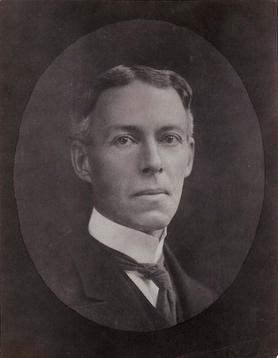William John Peters facts for kids
William John Peters (born February 5, 1863 — died July 10, 1942) was an American explorer and scientist. He spent a lot of time exploring cold Arctic lands and warm tropical areas. His important work in the early 1900s helped us understand Earth's magnetism much better.
Contents
Early Adventures
William Peters was born in Oakland, California, in 1863. He studied botany and chemistry at the University of California, Berkeley. Before finishing his degree, he started working on land surveys. He helped map out boundaries in western states with his uncles.
From 1884 to 1898, Peters worked as a topographer. This means he mapped land features for the United States Geological Survey. He mostly worked in western states like California, the Dakotas, Iowa, Kansas, and Nebraska.
Exploring the Arctic
Peters continued his mapping work from 1898 to 1902. He spent much of this time in Alaska. He worked with another explorer, Alfred Brooks. They explored the White and Tanana River Basins. They traveled over 1,600 miles on foot and with dog teams. The land was very difficult to cross. Many places in Alaska are named after William Peters. These include Peters Basin, Peters Dome, Peters Glacier, and Peters Pass near Denali Peak. There are also Lake Peters and Peters Glacier in the Brooks Range.
In 1901, Peters joined the Schrader-Peters expedition. They explored the John River and the Anaktuvuk River. Their journey then continued all the way to Point Barrow.
The Ziegler Arctic Expedition
Peters was a key member of the Ziegler Arctic Expedition from 1903 to 1905. He was the science leader and second in command. The main goal was to reach the North Pole. They hoped to go farther north than anyone before.
However, the ice conditions were extremely difficult. The expedition could not travel far north from their base. Their base was in Franz Joseph Land, north of Russia. Even so, Peters and his team collected important scientific information. They studied Earth's magnetism, the aurora (northern lights), stars, tides, and weather. This greatly added to our knowledge of the Arctic.
Mapping Earth's Magnetism
Peters became very interested in Earth's magnetic forces. He joined the Department of Terrestrial Magnetism (DTM). This group was part of the Carnegie Institution of Washington. The DTM wanted to map the magnetic forces of all Earth's oceans. This huge project helped scientists understand magnetism better. It also helped sailors correct errors on their magnetic maps. Peters was perfect for this job. He had great navigation skills, scientific experience, and a love for adventure.
Voyages on the Galilee and Carnegie
In 1906, Peters became the Commander of the ship Galilee. He was also the Chief Magnetic Observer. He led two long trips, traveling over 53,000 nautical miles. They mostly sailed in the Pacific Ocean. During these trips, Peters invented a special compass. This compass helped measure magnetic direction. The Galilee had some magnetic parts, which made measurements tricky. So, the DTM built a new ship, the Carnegie. This ship was made without magnetic materials.
Peters commanded the first two voyages of the Carnegie. The first trip, from 1909 to 1913, covered 9,200 nautical miles in the Atlantic Ocean. The second trip lasted three years. It covered over 92,000 nautical miles. They sailed mostly in tropical parts of the Atlantic, Indian, and Pacific Oceans. Peters and his team found and fixed many errors on magnetic maps. This was a huge help for sailors navigating these oceans.
In 1914, Peters returned to the north. He commanded an expedition to Labrador, Hudson Bay, and Hudson Strait. They sailed on a schooner called the George B. Cluett. Even with very difficult wind, ice, and cold, Peters kept making magnetic observations on land and at sea.
Peters continued his work with the DTM in Washington, D.C. He retired in 1934. He had written over fifty scientific papers. Even after retiring, he kept helping with research projects. His work on the Galilee and Carnegie was a huge step forward in understanding Earth's magnetism. He helped create the basic ideas that other scientists built upon.
Clubs and Groups
- Aeroarctic
- American Association for the Advancement of Science
- American Geophysical Union
- American Section of the International Scientific Radio Union
- Arts Club of Washington, D. C.
- Cosmos Club
- Ends of the Earth Society
- Philosophical Society of Washington
- Washington Academy of Sciences
Family Life
On September 2, 1908, William Peters married Beatrice Speaight Boyd. They had one son, Geoffrey Lloyd Peters. They also had seven grandchildren: William T. Peters, Melody Peters, Catherine Peters Ortega, Geoffrey Peters, Chela Zabin, Atiq Zabinski, and Manuel Peters.


